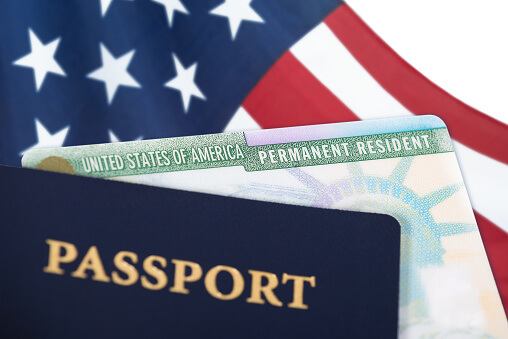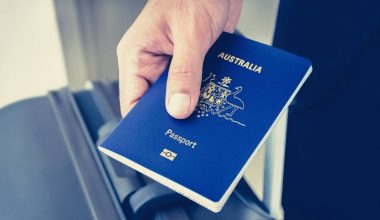If you’re an international student in the United States on an F1 visa, it is possible to remain in the country after you get your degree. The simplest way to go about it is to switch from an F-1 Visa to a Green Card and obtain permanent residency in the U.S.
This process is called the adjustment of status. In adjusting your residency status, it’s important to understand the different pathways through which you can lawfully do so.
Read through to find out the different ways you can adjust your current status.
Table of contents
F-1 Visas and Green Cards
The F-1 Visa allows international students to attend a full-time academic or English language program that leads to a degree, diploma, or certificate at an authorized U.S. university or educational institution.
The F-1 Visa is a non-immigrant visa, and you must prove during the application process that you intend to return home after your studies. As such, the visa is valid only for the period you are studying in the U.S.
You will be expected to leave the country when your studies end unless you become a lawful permanent resident by getting a green card. It’s important to note that you can switch your F-1 Visa to a Green Card while in the U.S. without returning to your home country.
As a green card holder, you’ll have the right to work full-time and not be restricted to the kind of job you can take. You’ll be able to travel within the U.S. without restrictions and leave and re-enter the country easily.
You’ll also be able to access public benefits and get almost all the rights of a U.S. citizen, excluding voting. If you decide to become a U.S. citizen, you can apply for citizenship within five years of living in the country as a permanent resident.
Also, read: Who Is Eligible For A Student Loan in The UK?
F-1 Visa Eligibility
Here are the requirements that make you eligible for an F-1 visa:
- Apply to any approved school in the US. These SEVP-approved schools may not just be universities; they can be high schools, seminaries, conservatories, or a language program.
- Enroll as a full-time student
- Show proficiency in the English language
- Have proof of sufficient finance to support your study in the US
- Have a connection with your home country to indicate that you have the intention of returning after you finish studying in the US.
- Live outside the United States when you are going through the application process.
Can I Switch to a Green Card from an F-1 Visa?
Yes, you can. Interestingly, there are different ways to switch to a green card from an F-1 visa. The following pathways have been proven to be the most legitimate ways to switch from an F-1 visa to a green card.
Read through and select which process works best for you.
● Self-petition for an EB-1 Visa
● Receive employer sponsorship
● Adjust status to a dual intent visa
● Become an investor
● Marry a U.S. citizen or permanent resident.
Self-Petitioning for the EB-1 Visa
One option to transition from an F-1 to a green card visa is to go through the employment route by applying for the EB-1 Visa, also called the first-preference employment-based visa. If you have developed expert-level abilities in your discipline during your studies in the U.S., you can apply for the EB-1 visa.
However, the requirements are strict. For instance, you must provide evidence that you have won a distinctive award in your field, among other criteria.
This visa is designed for the following categories of individuals;
● Outstanding researchers and professors
● Professionals with extraordinary abilities in science, art, athletics, and business
● Multinational managers and executives
● Those demonstrating exceptional abilities, like recipients of a Pulitzer or an Olympic medal.
Related Article: What Do Colleges Look For In Students | Requirements Explained
Receiving Employer Sponsorship
Many F-1 students may not qualify for the EB-1 visa due to its stringent requirements. If that applies to you, you may be able to apply for the EB-2 or EB-3 visas, which are the second-preference and third-preference employment-based visas, respectively.
To apply for the EB-2 or EB-3 visa, you must have a job offer in your discipline, and your employer must be willing to sponsor you. You can only self-petition for these visas if you have a national interest waiver because your work benefits the U.S. economy.
The EB-2 Visa is designed for individuals who
● Have received a job offer from a U.S. employer for work that requires an advanced degree and at least five years of progressive job experience.
● Possess exceptional ability in the sciences, business, or arts.
● Have a national interest waiver for the position.
The EB-3 Visa is designed for skilled workers, professionals, and other kinds of workers who have a bachelor’s degree, work experience, and relevant training in their field.
Adjusting to a Dual-Intent Visa
An indirect way to get permanent residency in the U.S. is to adjust your F-1 status to the H-1B dual intent visa. After completing six years of work on a dual intent visa, you can then petition for readjustment of status to a Green Card.
However, the H-1B visa has an annual cap and is highly competitive. While waiting for a decision on your visa, you can participate in the Optional Practical Training (OPT) program with your F-1 student visa.
The OPT program allows you to take a job in your field of expertise for up to 12 months after your study program ends.
Becoming an Investor
Another way to get a Green Card is to invest in a business in the U.S. and apply for the EB-5 immigrant investor program.
To qualify for this program, you must make a capital investment of between $800,000 and $1,050,000 in a new commercial enterprise that will create full-time positions for at least ten qualifying employees.
Marrying a U.S. Citizen or Permanent Resident
You can also get a Green Card if you marry a U.S. citizen or lawful permanent resident. However, getting a green card through marriage is rigorous and involves interviews, extensive background checks, and document reviews.
You must prove to the US Citizenship and Immigration Services (USCIS) that your relationship is genuine and not a ploy to get residency. If your application is successful, you will get an IR-1 or Cr-1 visa, depending on your circumstances.
Read: What to do When Student Loan Account Is Closed Due To Transfer
Can I work in the US with a F1 visa?
Pending when you’re able to change your residency from F-1 visa to green card, you can work in the US using the F-1 visa. However, the total work hours allocated to the F1 visa holders is 20 hours during active school session.
You can only work full-time when schools are not is session or during the annual break.
Frequently Asked Questions
It varies. Family-based Green Cards may take between 9 and 36 months, and employment-based Green Cards take between 1 year and 6 years.
Family-based Green Cards are the fastest and most popular path to permanent residency.
There are different fees involved with Green Card applications. For employment-based Green Cards, your employer must pay $700 to petition you, and you will pay $1,140 to adjust your status to permanent residency.
Conclusion
Each pathway to switch from an F-1 Visa to a Green Card has its own eligibility and documentation criteria that an applicant must meet for their application to be successful. Before, you take any of those routes listed above, be sure to carry out your due diligence.
References
- Boundless.com – The F-1 Student Visa, Explained
- Ashoorilaw.com – F1 Visa to Green Card: 5 Ways to Get Your Green Card
- Visaguide.world – Can F1 Students Apply for Green Card?



